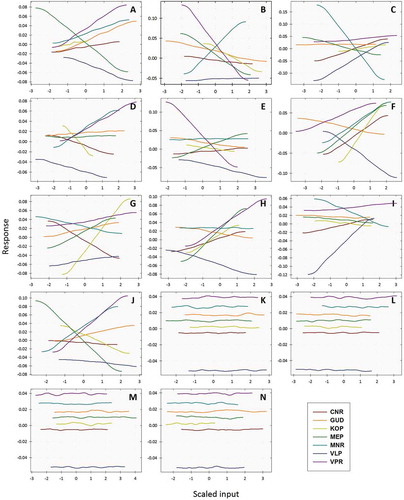Figures & data
Figure 1. Map of elevation range and meteorological stations in the SITR. Black lines with the cross line are the boundary of tea growing region, grey lines are administrative boundaries of districts and blue line are state boundaries of India. The base map of India including administrative units at different levels was acquired in vector format with data available from GADM database of Global Administrative Areas (http://gadn.org/country) and processed using ESRI® ArcMap Version 10.1.
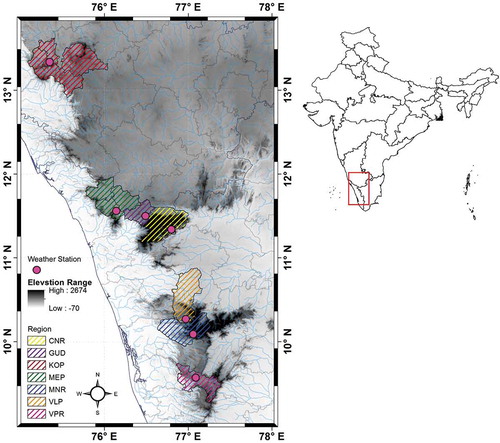
Table 1. Location of weather stations and data summary of the tea growing districts of South India
Figure 2. Crop variability in terms of coefficient of variation (CV%) and standard deviation (STD) for monthly (a), seasonal (b) and annual tea yield (c) over SITR for 1981–2015. The horizontal line in the boxes indicates mean (thick) and median (thin) tea yield (kg ha−1), the lower boundary of the box indicates the standard deviation (STD) while the upper boundary of the box indicates 95% percentiles. The lower and upper whiskers representing the minimum and maximum observed value. Filled circles at both below and above the whiskers indicate outliers. Values at the bottom represent the percentage of coefficient of variation (CV) is the ratio of the standard deviation to the mean.
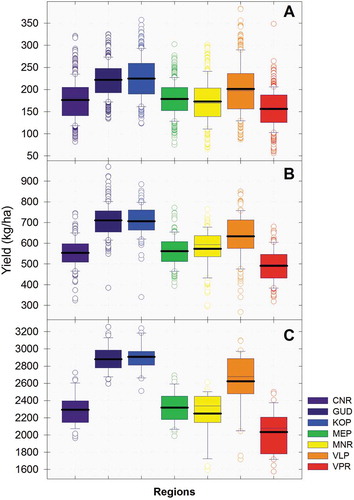
Table 2. Coefficient of multiple linear regression
Table 3. Predictive performance of statistical models during calibration and testing periods for the crop yield of SITR
Figure 3. Comparison of observed and modelled monthly tea yield (kg/ha; y axis) of Valparai during calibration (a) and testing period (b), and cross-validation plot at various temporal scales (c). Observed yield (kg/ha) in the x-axis (in the top and in the bottom) and predicted yield (kg/ha) y-axis (in the left and right). OBS: observed tea yield; and modelled yield by SMLR: step-wise multiple linear regression; SARIMAX: Seasonal autoregressive integrated moving average; ANN: artificial neural network; and VAR: Vector autoregressive model.
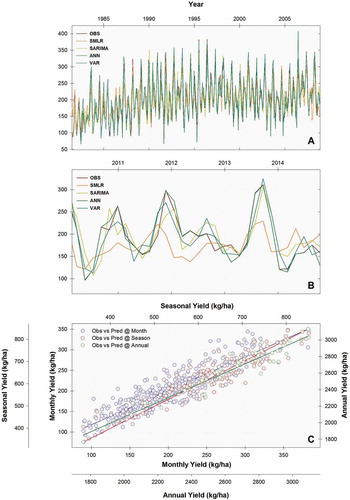
Figure 4. Box Plot of observed and modelled tea yield over SITR. Left, centre and right panel shows monthly (a-g), seasonal (h-n) and annual (o-u) tea yield, respectively. The regional codes are the same as those in the footnotes below Figure , but for model performance.
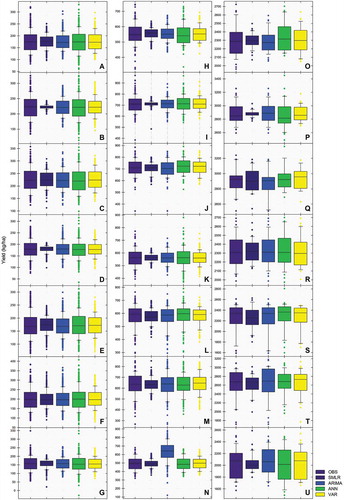
Figure 5. Impulse response functions of climate variables on tea yield (y-axis), Response of YPH (a & e), Tmin (b & f), Tmax (c & g) and RF (d & h) at seasonal (a-d) and annual (e-h) time series.
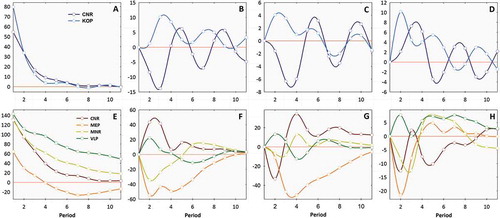
Table 4. Granger causality test
Figure 6. First order (FS: in Orange) and total global sensitivity (GS: in Red) of tea yield (kg ha−1) due to climate variability at month (a-g, top panel), season (h-o, middle panel) and annual (P-V, bottom panel) scales. All abbreviations are the same as those in the footnotes below Table .
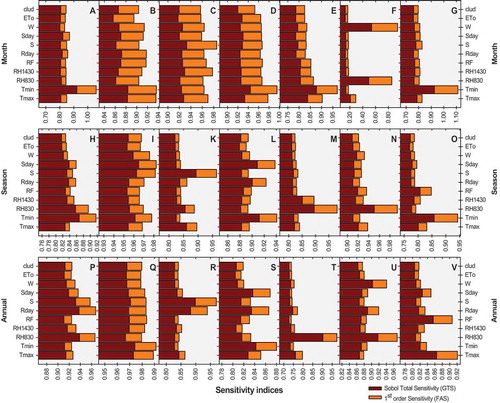
Figure 7. Region and variable specific global sensitivity response at month, season and annual tea productivity. (a): Tmin (°C); (b): Tmax (°C); (c): RH830h (%); (d): RH1430h (%); (e): RF (mm); (f): Rday; (g): S (h); (h): Sday; (i): W (k day−1); (j): S830 (°C); (k): S1430h (°C); (l): Sm (%); (m): ETo (mm); (n): Cloud (%).
